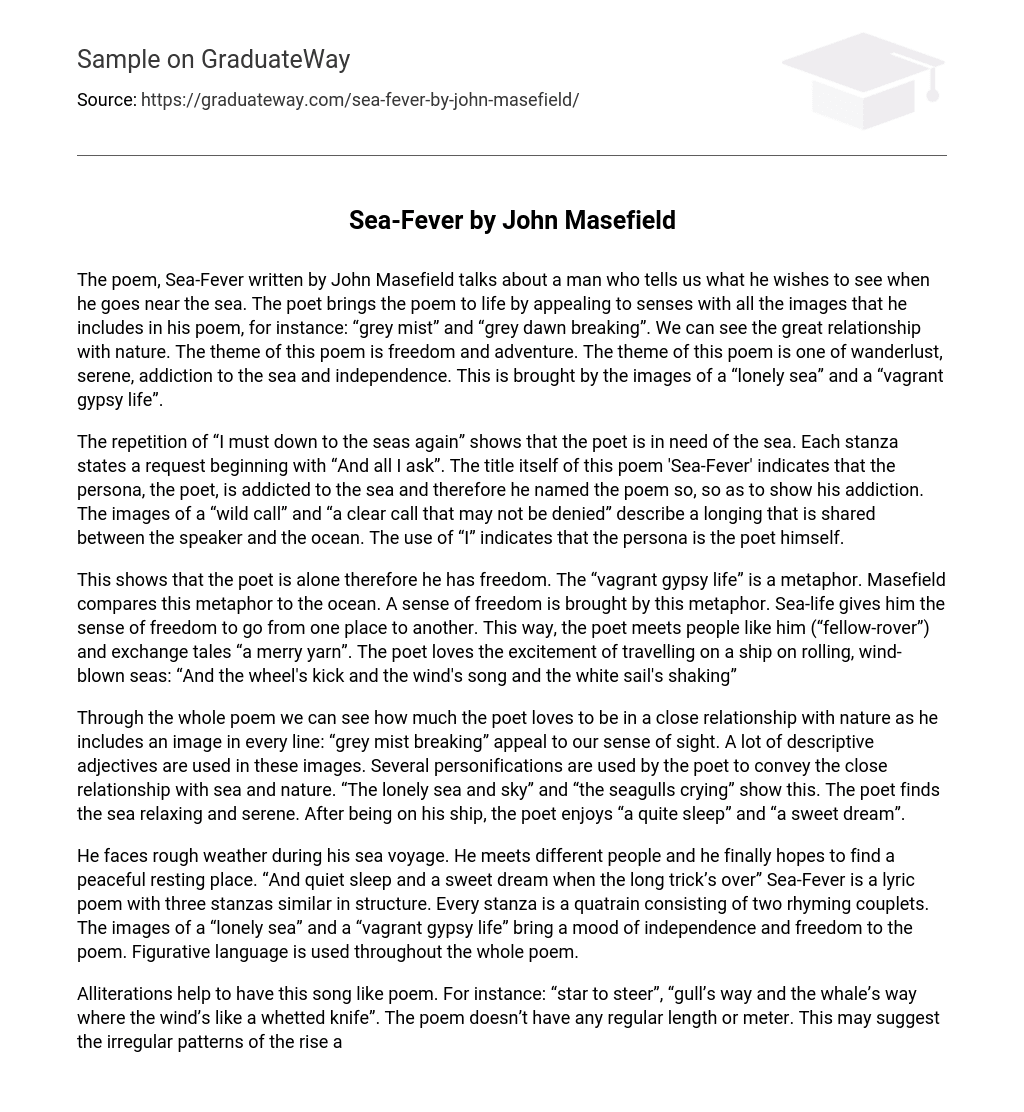The poem, Sea-Fever written by John Masefield talks about a man who tells us what he wishes to see when he goes near the sea. The poet brings the poem to life by appealing to senses with all the images that he includes in his poem, for instance: “grey mist” and “grey dawn breaking”. We can see the great relationship with nature. The theme of this poem is freedom and adventure. The theme of this poem is one of wanderlust, serene, addiction to the sea and independence. This is brought by the images of a “lonely sea” and a “vagrant gypsy life”.
The repetition of “I must down to the seas again” shows that the poet is in need of the sea. Each stanza states a request beginning with “And all I ask”. The title itself of this poem ‘Sea-Fever’ indicates that the persona, the poet, is addicted to the sea and therefore he named the poem so, so as to show his addiction. The images of a “wild call” and “a clear call that may not be denied” describe a longing that is shared between the speaker and the ocean. The use of “I” indicates that the persona is the poet himself.
This shows that the poet is alone therefore he has freedom. The “vagrant gypsy life” is a metaphor. Masefield compares this metaphor to the ocean. A sense of freedom is brought by this metaphor. Sea-life gives him the sense of freedom to go from one place to another. This way, the poet meets people like him (“fellow-rover”) and exchange tales “a merry yarn”. The poet loves the excitement of travelling on a ship on rolling, wind-blown seas: “And the wheel’s kick and the wind’s song and the white sail’s shaking”
Through the whole poem we can see how much the poet loves to be in a close relationship with nature as he includes an image in every line: “grey mist breaking” appeal to our sense of sight. A lot of descriptive adjectives are used in these images. Several personifications are used by the poet to convey the close relationship with sea and nature. “The lonely sea and sky” and “the seagulls crying” show this. The poet finds the sea relaxing and serene. After being on his ship, the poet enjoys “a quite sleep” and “a sweet dream”.
He faces rough weather during his sea voyage. He meets different people and he finally hopes to find a peaceful resting place. “And quiet sleep and a sweet dream when the long trick’s over” Sea-Fever is a lyric poem with three stanzas similar in structure. Every stanza is a quatrain consisting of two rhyming couplets. The images of a “lonely sea” and a “vagrant gypsy life” bring a mood of independence and freedom to the poem. Figurative language is used throughout the whole poem.
Alliterations help to have this song like poem. For instance: “star to steer”, “gull’s way and the whale’s way where the wind’s like a whetted knife”. The poem doesn’t have any regular length or meter. This may suggest the irregular patterns of the rise and fall of the waves. The language used for this poem is rather simple. I like this poem as it has a lot of figures of speech. I also like the imagery and the mood of it. The poet really manages to convey his love for sea effectively through the use of figurative language.





